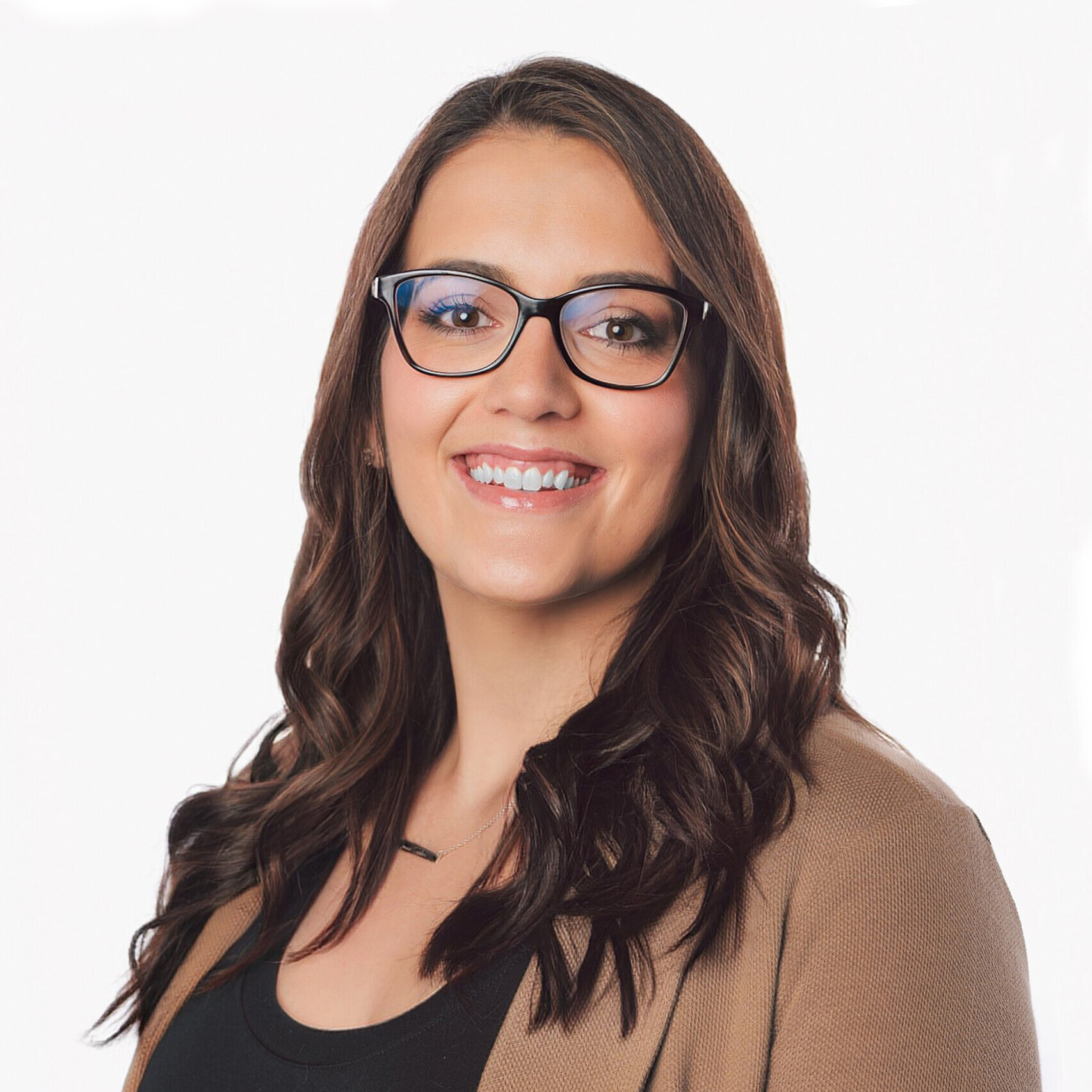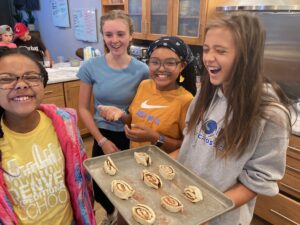Helping Every Learner Identify as a “Math Person”

It’s time we create learning environments that make mathematics accessible for all students
“But I’m just not a math person.”
We’ve all heard this refrain—and possibly even echoed it ourselves. As a young student, I felt this way for many years. For some reason, math just never clicked for me. My 11th-grade math class with Mr. Peterson changed all that. Why was his class different? He worked hard to bring us examples of math in the real world, connecting concepts back to our lives and making them feel relevant and accessible to us. He gave us voice and choice in our learning, and it made all the difference for me. I can only imagine how much my confidence and enthusiasm for math could have been changed had I experienced a similar instructional approach in all the grades prior.
I’ve come to understand that there is no such thing as a “math person,” and that high-quality math instruction is key to helping learners shed that perception. We know from decades of research that success in mathematics is more linked to opportunities to learn in a meaningful way than to innate intelligence, and we know that effective educators can nurture mathematical abilities in all students.
One approach that effectively brings math to life is termed “culturally responsive mathematics teaching” (CRMT). This approach creates a learning environment focused on mathematical sense-making in which students feel valued for the unique experiences and perspective they bring, for their ways of engaging in mathematical reasoning, and for their contributions to the collective success of the classroom community.
CRMT focuses on equity at a far deeper level than simply inserting a cultural reference or two or including a student’s name in a new math problem. The approach focuses on raising the bar for all learners in an equitable and inclusive way, never about lowering standards and removing challenges.
CRMT encourages the creation of relevant learning opportunities for students to dive into concepts and skills as a point of entry, and the approach helps educators create a community of math learners who value collaboration and see math as a way of reasoning with and about quantities. Perhaps most important, especially for those who don’t see themselves as “math people,” CRMT helps students see math as a part of their identity and a tool for examining the world through a quantitative lens.
Recently, Curriculum Associates released a new white paper on culturally responsive classrooms. Included in that guide are four key components necessary to practice CRMT:
1. Developing students’ proficiency in important math concepts, relationships, and skills
Perhaps obvious but worth underscoring is that mathematics should be at the core of CRMT, meaning all efforts to address cultural relevance must be meaningfully tied to math concepts and goals. For many students, past approaches to math instruction have been limited to teaching “basic skills,” which can involve tedious and disconnected rote drills A culturally responsive teacher will recognize the potential in every student to engage in mathematical thinking and will find ways to elicit a student’s reasoning.
Standards for twenty-first-century skills recognize the importance of understanding the concepts behind the calculations and emphasize productive engagement in math practices. To meet the expectations of more rigorous standards, teachers need lessons that offer access and supports to every student. What does this look like in practice? Educators can embed a “Number Talk” within a lesson to invite students to share their strategies about a specific problem, or engage students in discussing and connecting multiple representations used to solve contextual problems. When addressing a new question or lesson, a teacher could begin by inviting students to gather at the class “math wall” to reflect on their prior work and consider how concepts or strategies relate to past work.
How do we ensure our approaches support student proficiency? Here are some questions to consider:
- What are the “big ideas” of mathematics my students will learn this unit or year?
- What prior mathematical knowledge will my students need to make sense of these big ideas?
- Am I giving students sufficient time and resources to develop their own mathematical thinking?
- How will I communicate that their thinking is what matters, not just their answers? What language will I use?
- How am I ensuring students are making sense of the concepts and learning with coherence?
- Am I using Instructional routines that encourage both individual think time and partner/whole class discourse?
2. Valuing students’ identities: Inviting prior knowledge, ways of communicating, lived experiences, interests and communities into the learning process.
Find ways to connect math lessons to real, community-based issues or examples that your students will value. More often than not, students find it hard to make sense of why math matters to them, how they’ll use concepts in their worlds outside of school and how these skills will support them in future jobs. Part of CRMT is getting to know your students deeply, recognizing the ways in which they communicate, and inviting them to use forms they’re both familiar and comfortable with.
While formal academic language and mathematical notation are important, these skills are not the most immediately accessible and are best built after students have a chance to informally share their ideas; this is especially true for English Learners. Encourage engaged communication by showing students various ways they can relay their thinking– through spoken language, drawing pictures, hand gestures, and even calculator keystrokes. Once students find their “voice” to get their ideas out, teachers can show the link between their communication strategies and more formal language. This approach allows students to fully participate, feel validated for their way of thinking, and receive scaffolded supports to learning math terminology and notation.
Underscoring relevant real-world applications for math concepts helps engage students and answer the, “How will I ever use this?” question. A group of sixth-grade teachers came up with a neat way to involve parents in making these connections. Students conducted short video interviews with a parent/guardian during back-to-school night and asked them how math is used in their everyday life or job. The result: a multitude of real-world, community-sourced examples for learners to see applications of the concepts they’re learning in the classroom. In another example, a group of educators in southern California collaborated to design a unit for eighth graders about the Pythagorean Theorem. The lesson focused on identifying possible locations for a new cell phone tower near their school site and addressed a common complaint from students about poor cell phone reception in their area.
A powerful way to connect the classroom to your students’ lives and show your investment in their lived experiences is by visiting the spaces outside of school where they live, play, and connect. Visit them at home or during after-school programs, find out what community libraries, shops, and rec centers they’re visiting, and use that information to personalize activities in the classroom. Connect in and out of school learning by asking students to take photos of mathematics happening in their communities, then write problems based on those.
Questions to consider:
- What have I learned about my students’ prior knowledge and skills? How can I use that information to encourage them in their learning of mathematics?
- How and where can I learn about the experiences and interests of my students?
- In what ways do students see themselves and their communities reflected in positive ways while learning mathematics?
- How do I integrate language supports and develop the vocabulary to make the math accessible?
- How do I invite authentic, meaningful parent/community engagement into my students’ learning?
- How am I helping my students see ways to use mathematics to analyze and address issues within their community?
3. Sharing authority with students through inclusive, collaborative norms and routines
How are you distributing authority in your classroom? A great way to show students that their unique contributions are critical in shaping the learning experience is to invite them to craft a set of classroom norms for interactions during lessons. Use videos of previous year’s student interactions or pull out “Class Contracts” from past years so students can see concrete examples of appropriate ways to interact and learn from each other. You can also use role-playing to help establish class norms by showing productive examples and discussing problematic ones.
Allow each and every student to feel that they have the power to be authors of the mathematics concepts being learned. Use shared digital documents so students can collaborate on and share their written work or recordings of their mathematical reasoning with peers, their families, and other teachers.
Questions to consider:
- What norms have I established to ensure equitable participation and status among students?
- How am I empowering my students to have authority over the mathematics knowledge that’s being developed?
- How do I support the different language needs in my classroom?
- What instructional routines do I use to scaffold student engagement in productive math discourse and collaboration?
- What evidence do I have that my students are taking ownership of math?
In reflecting on the elements of a robust, responsive approach to math instruction, I realize that Mr. Peterson’s ability to teach me math concepts wasn’t just a coincidence or some sort of magic. Rather, it was an extension of his commitment to getting to know me and each of his students and helping us connect math to our world.
To learn more, read a new white paper from Curriculum Associates, titled Knowing and Valuing Every Learner: Culturally Responsive Mathematics Teaching or watch their recent webinar with insights from thought leaders and educators practicing CRMT.
For more, see:
- 5 Things That Make Project-Based Learning Culturally Responsive
- Going Beyond Data: 10 Tips for Building a Culture Around Numbers
- Building Culturally Responsive Classrooms with Digital Content
- Cultural Responsiveness Starts in the Principal’s Office
This post includes mentions of a Getting Smart partner. For a full list of partners, affiliate organizations and all other disclosures please see our Partner page.







0 Comments
Leave a Comment
Your email address will not be published. All fields are required.